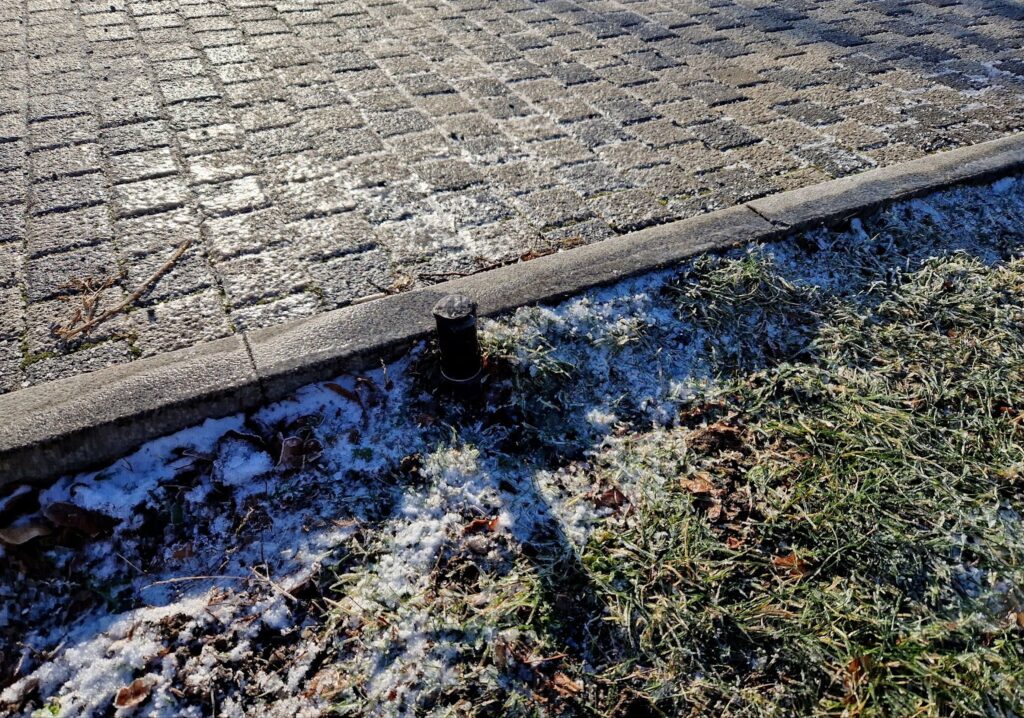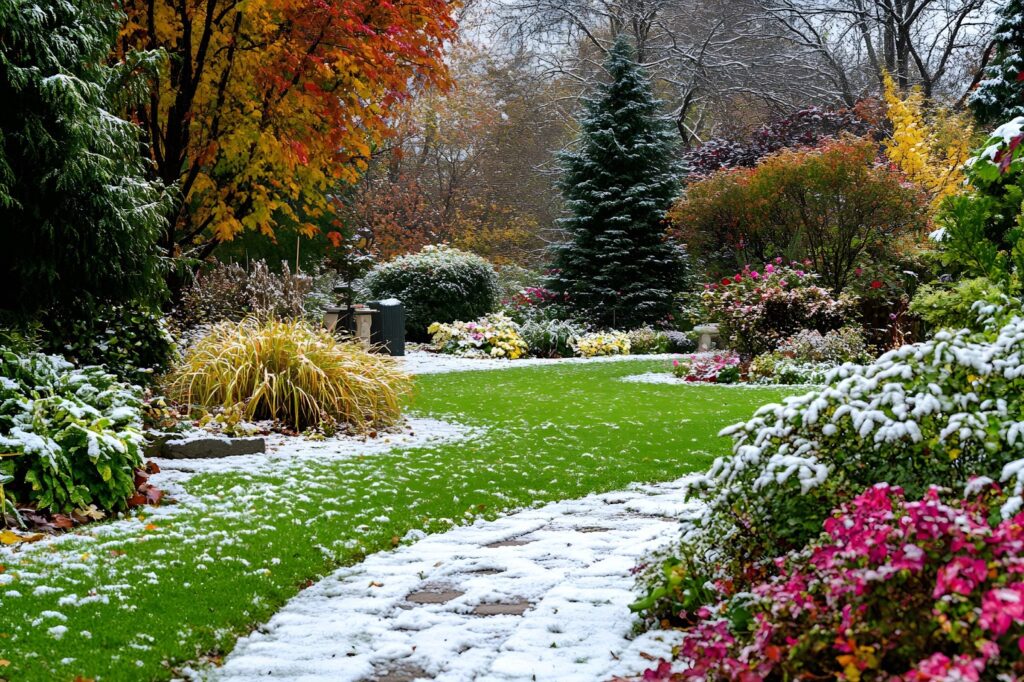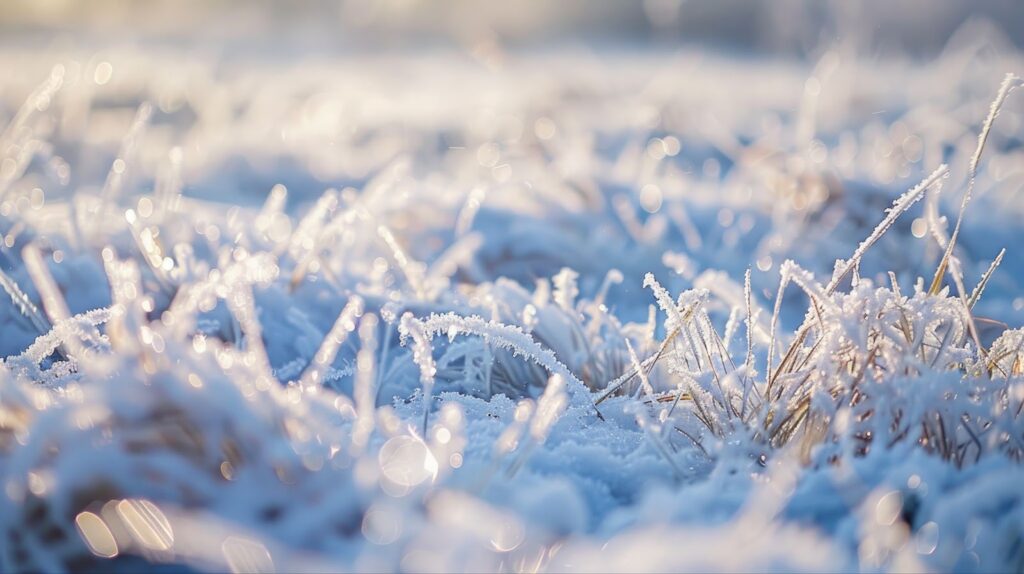Sod care doesn’t stop when winter arrives. In fact, the colder months partially determine the health and vitality of your lawn when spring returns. While your sod may grow more slowly or go dormant during winter, neglecting its care leads to issues that hinder its recovery and growth once temperatures rise.
Proper winter sod maintenance sets the foundation for a lush, green lawn in the spring. With the right techniques, you protect your sod from the challenges of frost, snow, and freezing temperatures while preventing damage from common mistakes like overwatering or excessive foot traffic. Winter care helps your sod survive the season and positions it to thrive in the months ahead.
Why winter sod maintenance is different
Sod reacts to winter in unique ways that require specific care. As temperatures drop, sod growth slows or enters dormancy, conserving energy until conditions improve. During this period, it doesn’t grow new blades or roots as actively, but its underlying health remains crucial for spring recovery.
Without proper care, dormant sod becomes vulnerable to stressors like dehydration, disease, or damage from foot traffic.
Utah’s winter conditions add an extra layer of complexity. The region’s freezing temperatures, snow accumulation, and freeze-thaw cycles strain sod if left unmanaged. Frost causes the blades to become brittle, while melting snow may lead to waterlogging if the soil doesn’t drain properly.
Sod also faces risks from compacted snow or excessive weight, which suffocate its roots and stunt future growth.
Even in this slower growth period, maintaining your sod is essential. Hydration must be carefully balanced — too much water may freeze and harm roots, while too little leads to dehydration.
Monitoring for signs of stress or disease helps prevent small issues from escalating into major problems. Proper maintenance during winter ensures that your sod remains strong and ready to bounce back when spring arrives, laying the groundwork for a lush, vibrant lawn.
Key steps for winter sod care
Watering practices
Watering your sod in winter requires precision. Reduce the frequency while ensuring deep watering to maintain consistent soil moisture. Sod needs hydration to survive dormancy, but overwatering leads to freezing issues that damage roots. The best time to water is mid-morning, allowing the grass to absorb moisture before temperatures drop overnight.
Protecting sod from frost and snow
Foot traffic is one of the biggest risks to sod during frost and thaw cycles. Walking on frozen grass crushes its delicate structure, leading to damage that’s visible come spring. Limit activity on your lawn during these vulnerable periods.
For snow removal, use gentle methods such as a plastic shovel or a snow blower set at a high clearance. Avoid heavy machinery or metal tools, as they tear or compact the sod.
Monitoring sod health
Dormant sod may not grow, but it still requires regular inspection. Watch for signs of stress such as discoloration, thinning patches, or brittle blades. Diseases like snow mold emerge during winter, particularly in areas with poor drainage or heavy snowfall.
Pests may also seek refuge in your lawn during colder months, so stay alert to prevent infestations. Addressing these issues early minimizes damage and ensures a smoother recovery in spring.
Mowing considerations
Winter mowing isn’t frequent, but it’s still important when needed. Keep your grass slightly taller to provide extra insulation against the cold. Raise your mower blade to avoid scalping the sod, which can weaken it. Never mow when the grass is wet or frosted, as this causes tearing and leaves the sod susceptible to further stress.

Common winter sod mistakes to avoid
Winter sod care requires attention to detail, and avoiding common pitfalls is as important as following best practices. Missteps during the colder months lead to long-term damage, making recovery in spring much harder.
One of the most frequent mistakes is mismanaging watering. Overwatering during winter causes the soil to freeze, damaging roots and inviting fungal issues.
On the other hand, underwatering leaves the sod dehydrated, weakening its ability to survive dormancy. Striking the right balance — deep watering at less frequent intervals — is crucial to maintaining hydration without risking harm.
Another issue arises when early signs of disease or pests go unnoticed. Snow mold, often caused by poor drainage or heavy snowfall, quietly spreads under the surface, leaving patches of dead grass in spring.
Similarly, dormant pests may burrow in unnoticed, creating issues that become evident only when the weather warms. Regular inspections are key to catching these problems early and addressing them effectively.
Heavy traffic on frozen or wet sod is another common culprit of winter damage. Walking or driving over frozen grass crushes its structure, leading to dead spots and compaction that hinder future growth. Avoid stepping on the lawn during frost or after a thaw, when the soil is soft and prone to damage.
Finally, improper mowing weakens the sod. Cutting the grass too short removes its natural insulation, leaving it exposed to cold temperatures. Mowing during frost tears the blades, creating jagged edges vulnerable to stress and disease. Always maintain an appropriate height and avoid mowing under frosty or wet conditions.
Preparing for spring
Winter care lays the groundwork for a thriving lawn come spring. The effort you invest ensures strong roots and resilient growth, helping your sod recover quickly as temperatures rise. Without it, your lawn may struggle with patchy growth and delayed recovery.
As the weather warms, gradually adjust your sod care routine. Increase watering frequency to support the grass as it becomes active, but avoid over-saturating the soil, especially during spring rains. Inspect for winter damage, such as dead spots or compaction, and address these issues early with aeration, reseeding, or targeted treatments for pests and disease.
When it’s time to mow, start with a higher blade setting to reduce stress on the recovering sod. Applying a balanced spring fertilizer replenishes nutrients and encourages healthy growth, giving your lawn the vibrant color and fullness you want.
By transitioning thoughtfully from winter sod maintenance to spring care, you’ll set your lawn up for a lush, beautiful season. The steps you take now ensure your sod is ready to thrive.
Enjoy a luscious lawn all year round with Monarch Sod

When it comes to maintaining and enhancing your lawn, Monarch Sod is your trusted partner. Our Utah-specific sod varieties, like Kentucky Blue Grass and drought-resistant blends, thrive in the region’s unique climate, from freezing winters to hot summers.
Whether you’re installing new sod or revitalizing your lawn, we offer freshly harvested products, expert guidance, and professional installation services to make the process seamless and stress-free.Contact Monarch Sod today or call 801-893-9637 and let us help you achieve the lawn you’ve always wanted. With our high-quality sod and proven expertise, your lawn will flourish year-round.











